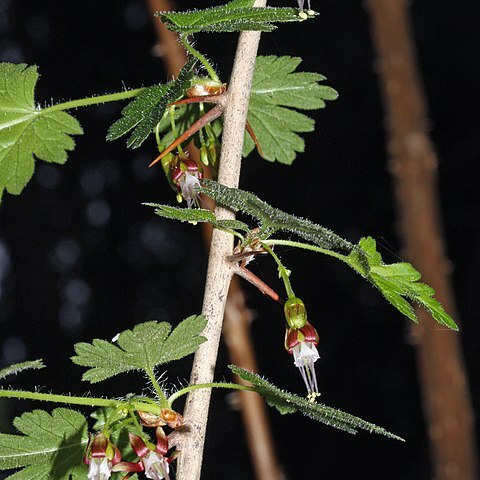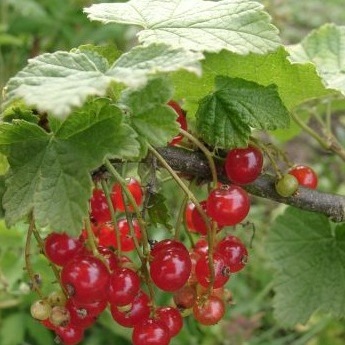Shrubs usually synoecious (R. diacanthum dioecious). Stems usually differentiated into short shoots and long shoots, often glandular-pubescent, bearing spines at nodes or not, internodal bristles present or absent. Leaf blades roundish, ovate, obovate, reniform, or triangular to pentangular, surfaces glabrous or hairy, often glandular, palmately veined. Inflorescences terminal or axillary racemes, corymbs, or solitary flowers; bracts subtending pedicels persistent. Flowers: free portion of hypanthium saucer-shaped, cup-shaped, campanulate, or tubular; sepals greenish, white, yellow, pink, red, or purple; petals greenish, white, yellow, pink, red, or purple; nectary disc prominent, dark red, purple, or yellow, relatively thick, or not prominent, greenish. Berries globose. x = 8.
Hypanthium prolonged beyond the inferior ovary, saucer-shaped to tubular; sep longer than the small pet; sep, pet, and stamens (4)5, the stamens opposite the sep and (except in R. lacustre) usually inserted at the level of the sinuses; ovary unilocular with 2 parietal placentas; style usually bifid; fr a many seeded berry; shrubs with palmately veined and lobed lvs (many of them fascicled on short lateral branches) and small fls in small clusters or racemes. (Grossularia, Limnobotrya) 150, N. Temp. and Andes.
Prostrate to erect, bushy and densely branched, sometimes spiny shrubs. Lvs mostly 3-or 5-palmately lobed, sometimes rugose, often ± glandular and aromatic when bruised. Hypanthium tubular to campanulate or globose, usually of same colour as sepals. Fr. with sweet or acid pulp.


